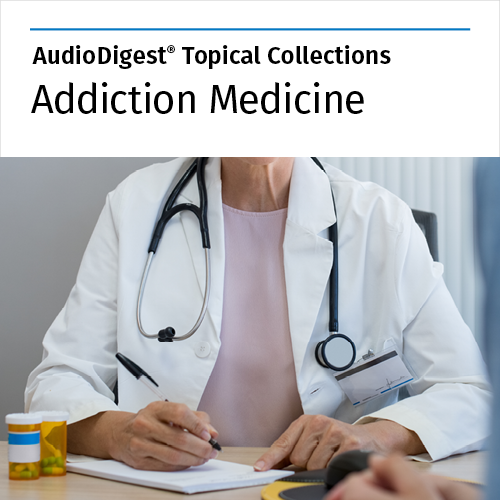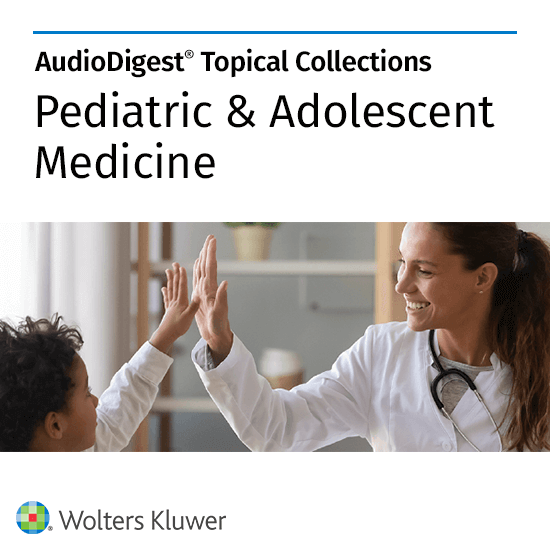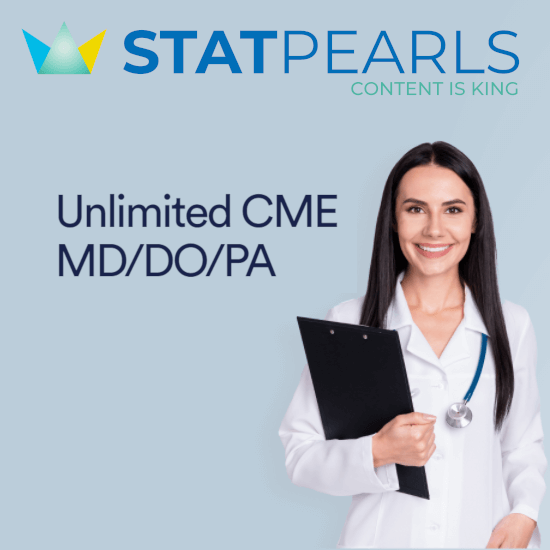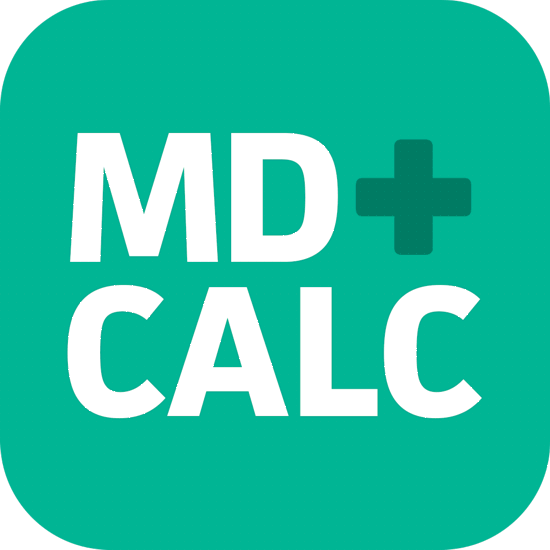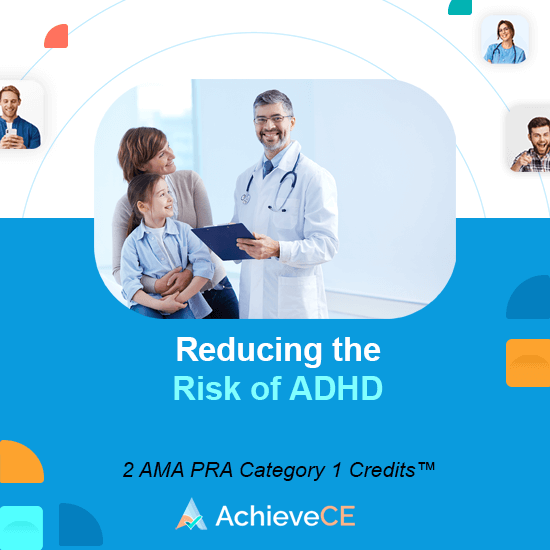Pediatrics CME
16 - 30 of 39 results
-
AudioDigest CME Addiction Medicine
Get up-to-date, evidence-based guidance on substance use and addictive disorders, including prevention, treatment, and harm reduction strategies. Primarily intended for Medical Doctors and Registered Nurses in Family Practice, Pediatrics, Internal Medicine, Anesthesiology, Psychiatry, and Obstetrics & Gynecology, this collection fulfills up to 8 hours of DEA registration requirements for physicians across all medical specialties.
See full details chevron_right- Cost: $399
- Credit hours: 21
- CME credits awarded by: Accreditation Council for Continuing Medical Education
-
EXCLUSIVE DEAL: $50 OFF
VisualDx CME Subscription
VisualDx is an award-winning clinical decision support system. Your second opinion in your pocket. Designed to support therapeutic decisions and elevate patient satisfaction, it’s a tool clinicians trust every day.
On average, users save over 2 hours a week. VisualDx leverages artificial intelligence to help you quickly analyze skin lesions: snap a photo, match symptoms, and generate a tailored differential diagnosis in seconds. It’s clinical confidence, accelerated.
See full details chevron_right- Cost: $299$250
- Credit hours: Earn Unlimited CME Credits each time you use VisualDx!
- CME credits awarded by: MedIQ
- Format: Online Web Application, Mobile Apps for both Android and Apple devices
-
AudioDigest CME Pediatric & Adolescent Medicine Topical Collection
This exclusive Pediatric & Adolescent Medicine CME Topical Collection offers insights into clinical pharmacology, infectious disease, substance abuse, and much more in this multi-specialty collection.
See full details chevron_right- Cost: $499
- Credit hours: 44
- CME credits awarded by: Accreditation Council for Continuing Medical Education
- Format: Audio
-
StatPearls Unlimited Physician MD/DO/PA CME
Stay on top of your game with the StatPearls Physician Unlimited CME programs. With 6,046 activities, StatPearls is the largest CME provider in the world. These Pub-Med Indexed articles are categorized into 162 specialty areas which lets you better access activities that will make the biggest impact on your practice. One subscription allows access to all the activities, including all state-requirements.
Pricing Options
- 6 Month subscription: All 6,339 CME Activities – $249 per 6 months
- Annual subscription: All 6,339 CME Activities – $349 per 1 year
- Lifetime: All 6,339 CME Activities + Access to Board Reviews Forever – $1999
- Cost: Varies
- CME credits awarded by: ETSU
- Format: On Demand Online & Board Reviews
-
MDCalc Pediatrics CME
Your MDCalc CME subscription includes 15 AMA PRA Category 1 Credits™, with up to 11.5 credits available in the Pediatrics specialty.
Easily earn and redeem CME as you use review CME eligible calculator content. Over 1 million medical professionals use MDCalc’s over 550 tools daily to support clinical decision making at the bedside. Earn CME with the following Pediatrics calculators:
- AAP Pediatric HTN Guidelines
- Alvarado Score
- APGAR Score
- Bacterial Meningitis Score
- CATCH Rule
- FeverPAIN Score
- Paradise Criteria
- Pediatric Appendicitis Score (PAS)
- Peds NEXUS II Head CT Decision Instrument
- Rule of 7s
- Steroid Conversion
- Westley Croup Score
- Cost: $199
- Credit hours: 15
- CME credits awarded by: EB Medicine and MD Aware, LLC.
- Format: On-Demand Online, Mobile App
-
BoardVitals Pediatric MOC Question Bank and Recertification Test Prep
The BoardVitals Pediatric MOC Question Bank and Recertification Test Prep has over 1400 Pediatric MOC Recertification questions targeted to the ABP exam guidelines. Each question has an answer and detailed explanation, as well as an indicator of the percentage of Pediatricians who answered the question correctly. Like the Pediatric MOC exam itself, the Board Vitals question bank is focused on clinical knowledge.
The BoardVitals Pediatric MOC Question Bank and Recertification Test Prep features:
• Pediatric practice tests in review mode or timed mode
• Individually suggested content based on your strengths and weaknesses using Computer Adaptive Testing
• Each question is reviewed and rated by other Pediatricians
Pediatricians preparing for initial certification should see the Board Vitals Pediatrics Board Review Question Bank and Study Program.Target Audience:
See full details chevron_right
Pediatricians preparing for the Maintenance of Certification exam.- Cost: $249
- Credit hours: 45
- CME credits awarded by: University of Nebraska Medical Center
- Format: On-Demand Online
- Material last updated: Continuously Updated
-
AchieveCE Reducing the Risk of ADHD
Attention-deficit/hyperactivity disorder (ADHD) is a chronic neurodevelopmental disorder that has been diagnosed in up to 10% of school-age children in the US and frequently persists into adulthood. A study in a large Danish cohort found that ADHD was associated with higher mortality rates in children, adolescents, and adults, mainly due to accidents. Pharmacologic treatment of ADHD in children has been reported to decrease the risk of substance abuse in adolescents, and use of ADHD medications in adults has been associated with a reduced risk of serious traffic accidents and criminal behavior. This activity discusses how to reduce the risk of ADHD with PTBM and drugs approved by the FDA for treatment of ADHD.
See full details chevron_right- Cost: $15
- Credit hours: 2
- CME credits awarded by: 2 AMA PRA Category 1 Credits™ by The Medical Letter and AchieveCE
- Format: On-Demand Online
-
FREE
ScientiaCME Contemporary approaches and emerging therapies for the management of respiratory syncytial virus in infants and young high-risk children
Activity Description / Statement of Need:
In this online, self-learning activity:Respiratory syncytial virus (RSV) is a highly contagious pathogen belonging to the Pneumoviridae family that circulates seasonally with other respiratory viruses. The majority of the population is exposed to RSV, but children under the age of two years and older adults are at the greatest risk of significant morbidity and mortality. RSV infections are responsible for approximately 60-80% of pediatric bronchiolitis and 40% of pediatric pneumonia cases and are a major cause of global hospitalization and mortality. Almost 70% of children are exposed to RSV during their first year of life, and 90% are exposed within their first two years, resulting in an estimated 427,000 emergency department visits and 1.6 million pediatrician visits annually.
Target Audience:
See full details chevron_right
HCPs including: Obstetricians, pediatricians, and family medicine physicians; physician assistants, nurse practitioners, pharmacists specializing in pediatrics; and any other HCPs involved or interested in the management of RSV in infants and high-risk children.- Cost: Free
- Credit hours: 1
- CME credits awarded by: ScientiaCME
- Format: On-Demand Online
- Material last updated: October 15, 2023
- Expiration of CME credit: October 15, 2025
-
30% OFF W/ CODE: CME30
Oakstone CME Pediatric Board Review
Board Prep with Online Pediatrics CME
This nationally recognized program from Cleveland Clinic is a comprehensive pediatric board review sharply focused on helping you prepare for board certification or recertification. The quality and breadth of content in this online CME course is also beneficial for those seeking a thorough review of basic pediatric clinical information while earning MOC.
With 60+ general pediatric and specialty-specific lectures and board simulation sessions, Pediatric Board Review is continuing medical education that will help you to:
- Gain the knowledge you need to pass the pediatric board examination or recertification exam
- Devise a differential diagnosis and construct a therapeutic plan for specific presentations
- Interpret laboratory findings for a host of clinical presentations
- And more…
- Cost: $995
- Credit hours: 45.5
- CME credits awarded by: Oakstone Publishing
- Material last updated: November 15, 2022
- Expiration of CME credit: November 15, 2024
-
FREE
ScientiaCME Taking aim at IgA nephropathy (IgAN): present gaps and evolving management strategies
In this online, self-learning activity:
IgA nephropathy (IgAN) is an inflammatory kidney disease with IgA deposition in the glomerular mesangium. IgAN is the most prevalent primary chronic glomerular disease worldwide. Globally, IgAN has an estimated incidence of 25 cases per one million people annually. It is more common in children and young adults than in the elderly. Among patients of all ages, the average annual prevalence of IgAN in the United States is 329 per 1 million. The epidemiology and gender distribution of IgAN vary by country and region. In North America and Europe, the prevalence is higher in men.
Target Audience:
HCPs including: nephrologists, internists, and pediatricians; physician associates, nurse practitioners, and pharmacists who practice in those areas of specialty; and those who otherwise care for or clinically encounter patients with IgAN.
See full details chevron_right- Cost: Free
- Credit hours: 1
- CME credits awarded by: ScientiaCME
- Format: Online
- Material last updated: December 21, 2024
- Expiration of CME credit: December 21, 2026
-
FREE
ScientiaCME Safe and sound: empowering professionals with insights into the identification and management of alpha-mannosidosis
In this online, self-learning activity:
Alpha-mannosidosis (AM) is a rare recessive lysosomal storage disorder characterized by immune deficiency, facial and skeletal abnormalities, hearing impairment, and intellectual disability. It is caused by mutations in the MAN2B1 gene, leading to deficiency in alpha-mannosidase, a lysosomal enzyme involved in the oligosaccharide degradation pathway. While the exact prevalence of AM in the US is unknown, it has an estimated incidence of 1 in 500,000 live births worldwide. Laboratory indicators of AM often appear shortly after birth, followed by progression of clinical manifestations. While symptoms of AM vary considerably in individual presentations, three clinical subtypes have been identified (mild, moderate, and severe) and are used to guide disease prognosis and management. The current diagnostic algorithm for AM focuses on measuring alpha-mannosidase activity in leukocytes using colorimetry or fluorimetry. An alpha-mannosidase activity level of under 5% suggests AM, and a diagnosis is then confirmed with genetic sequencing.
See full details chevron_right- Cost: Free
- Credit hours: 1
- CME credits awarded by: ScientiaCME
- Format: On-Demand Online
- Material last updated: January 06, 2025
- Expiration of CME credit: January 06, 2027
-
FREE
ScientiaCME Thymidine kinase 2 deficiency identification and management: TK2D-MDDS, do you copy?
Activity Description / Statement of Need:
In this online, self-learning activity:
Thymidine kinase 2 deficiency (TK2D) is an ultrarare mitochondrial disease caused by recessive mutations in the TK2 gene and manifesting as a form of mitochondrial DNA depletion/deletion syndrome (MDDS) and mitochondrial myopathy. Under normal conditions, the TK2 gene encodes for the thymidine kinase enzyme present in the mitochondria, which is responsible for the phosphorylating of pyrimidine nucleosides, deoxythymidine, and deoxycytidine. These are the first steps in mitochondrial DNA synthesis, and researchers speculate that TK2 mutations affect muscle tissue because its higher energy demands make it most susceptible to mitochondrial impairment. Mutational analyses of patients with MDDS have found that approximately 15% have TK2 mutations, which may be extrapolated to about 600 to 2,700 individuals in the US.
Target Audience:
HCPs including but not limited to: neurologists, pediatric neurologists, pediatricians, primary care providers, pulmonologists, gastroenterologists, and medical geneticists; physician assistants, nurse practitioners, pharmacists, and nurses who practice in the aforementioned areas of specialty; and any other HCPs with an interest in or who may clinically encounter patients with TK2D.
See full details chevron_right- Cost: Free
- Credit hours: .75
- Format: On-Demand Online
- Material last updated: 02/07/2025
- Expiration of CME credit: 02/07/2027
-
FREE
ScientiaCME Pediatric and Adolescent Crohn’s Disease: Therapeutic Updates and Optimizing Medical and Nutritional Treatment
In this online, self-learning activity:
Crohn’s disease (CD) is an inflammatory bowel disease (IBD) defined by a transmural process that often occurs in the terminal ileum; although, any portion of the gastrointestinal (GI) tract can be affected. While the exact etiology of CD is unknown, a handful of genetic, immunologic, and environmental risk factors have been identified, including an impaired immune response to commensal or pathogenic intestinal microbiota that drives mucosal inflammation in genetically susceptible patients. About 34,000 children in the United States have CD, and the incidence of pediatric CD has increased by about 10% annually since 2007.
Target Audience:
HCPs including: pediatricians, pediatric gastroenterologists, and those who specialize in adolescent medicine; physician assistants, nurse practitioners, and pharmacists; and any other healthcare professionals with an interest in or who clinically encounter patients with pediatric CD.
See full details chevron_right- Cost: Free
- Credit hours: 1
- CME credits awarded by: ScientiaCME
- Format: Online On-Demand Course
- Material last updated: March 12, 2024
- Expiration of CME credit: March 12, 2026
-
FREE
Scientia CME: Early detection, lifetime protection: ADA-SCID identification and management, from cradle to adulthood
- Cost: Free
- Credit hours: 1
- CME credits awarded by: ScientiaCME
- Format: On-Demand Online
- Material last updated: February 01, 2025
- Expiration of CME credit: February 01, 2027
-
USE CODE CMELIST10 FOR 10% OFF THIS CME
A Nationally Approved CME/CE Medical Marijuana Course – TheAnswerPage
The course introduces the reader to the endocannabinoid system and its interaction with the components of the cannabis plant, and addresses various aspects of medical marijuana, including administration, therapeutic use, drug metabolism, physiologic and cognitive effects, potential risks, and drug interactions.
The use of marijuana in obstetric patients, pediatric patients, adolescent patients and elderly patients is discussed in detail. Important considerations for patients with ischemic heart disease, hepatic disease, psychotic illness, and those with a history of drug dependence are also provided.
See full details chevron_right- Cost: $120
- Credit hours: 3
- CME credits awarded by: ACCME – AMA PRA Category 1 Credits™, ACPE, AANP, ANCC, APA, AGD PACE
- Format: On-Demand Online
- Material last updated: 05/21/2024
- Expiration of CME credit: 5/21/25

